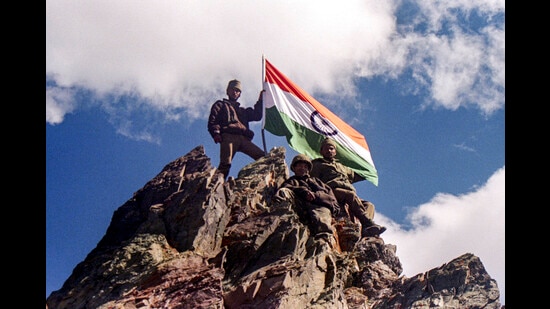Jul 25, 2024 09:06 PM IST
The security paradigm established in the aftermath of the war 25 years ago has continued to shape the two countries’ responses to subsequent crises
The fallout of the Kargil war, the first conflict fought by India and Pakistan under a nuclear overhang, continues to impact the security dynamics of the region even after 25 years. It is now well established that the Pakistan army, under General Pervez Musharraf, pushed India into the war by surreptitiously occupying strategic heights in Kargil sector of the Line of Control (LoC) at a time when the political leadership of the two countries was engaged in efforts aimed at reaching a detente, including the signing of the Lahore Declaration in February 1999. Despite immense odds, such as a political directive not to cross the LoC, India’s Army and Air Force mounted a campaign that resulted in the eviction of Pakistani regular troops disguised as militants. Indian troops doggedly took back one height after the other, suffering immense casualties, as the Air Force targeted the enemy’s logistics facilities and hilltop fortifications. Though the fighting was limited to a single theatre, unlike past wars between India and Pakistan, it lasted longer than any other conflict between the two sides.

The security paradigm established in the aftermath of the war has continued to shape responses by India and Pakistan to subsequent crises, and New Delhi’s posture played a key role in convincing the West that India could function as a responsible nuclear power. On the other hand, Pakistan’s military and intelligence establishment sought to use lessons learnt from Kargil to mount other unconventional operations, ranging from the Mumbai attacks of 2008 to the attacks on military facilities at Pathankot and Uri in 2016 and the Pulwama suicide bombing of 2019. Many of these attacks bore the distinctive fingerprints of Pakistan’s security establishment but were calibrated to ensure the military wasn’t directly implicated. India’s response was strikes by ground forces and combat jets across the LoC to show that New Delhi wouldn’t shy away from striking directly at the enemy.
Kargil and subsequent developments exposed the fault line between Pakistan’s civilian governments and the security establishment, with the military playing spoiler whenever peace overtures are made by politicians. A prime example was Musharraf’s grandstanding that scuppered the 2001 Agra Summit. Most of Pakistan’s current woes, from the tanking economy to the Taliban’s resurgence, can be traced to the military’s poor choices. Despite the current focus on the threat from China, India’s military will have to remain on guard to prevent any more misadventures by Pakistan’s security establishment.
Unlock a world of Benefits with HT! From insightful newsletters to real-time news alerts and a personalized news feed – it’s all here, just a click away! –Login Now!


